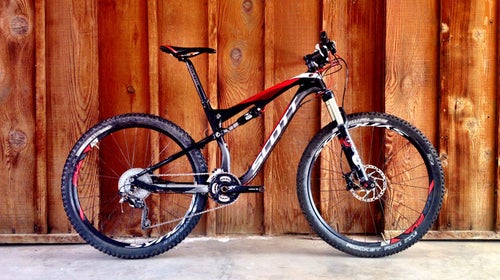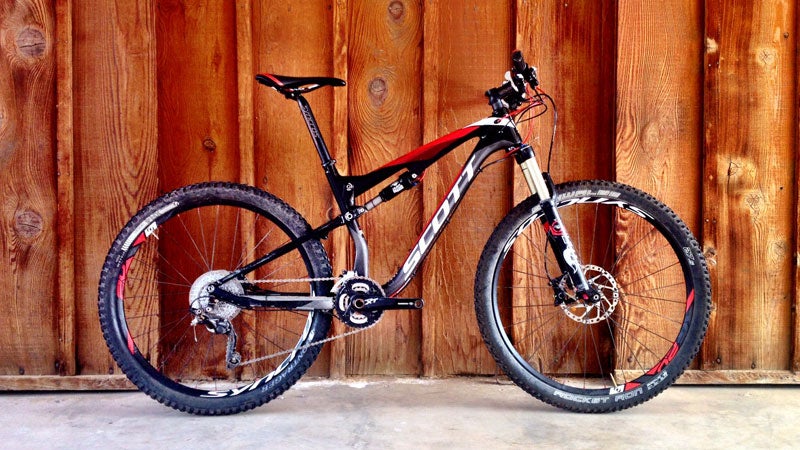It used to be that cross-country racers rode hard tails with 26-inch wheels, almost exclusively. But bigger wheels鈥攁nd even full suspension鈥攈ave gotten more commonplace among XC racers as bike geometries have become refined and equipment weights have tumbled.
Three years ago, Jaroslav Kulhavy ushered in a new era in cross-country when he became the first racer ever to win a World Cup on a 29er, . At the same race, Manuel Fumic and Christoph Sauser placed fifth and eight respectively on hard tail 29ers.
The new represents the continuing evolution of the cross-country race bike. Not only is it full suspension, but this 27.5er has 120mm of travel front and rear. That’s nearly five inches of suspension in a 24-pound package (size medium), and the top-shelf and are said to tip the scales around 21 pounds. As is the case across the board, suspension no longer means taking a massive weight penalty. And part of the additional weight on the 710 versus it’s more expensive brethren comes from the alloy rear triangle, as well as heavier鈥攂ut a lot less pricey than carbon-aluminum wheels.
The geometry on the Spark 710 is much more relaxed than past XC bikes, with a 68-degree head tube angle for more relaxed downhill handling. Flipping a chip that’s built into the suspension (an off-the-bike adjustment) increases the head angle from 68.3 degrees to 68.8 and raises the bottom bracket by six millimeters. Those may sound like tiny adjustments, but it made a huge difference in handling, with XC racer type testers vastly preferring the steeper, more aggressive setup.
The other dramatic change for Scott this year is their switch from DT Swiss to . The Spark 710 is equipped with a CTD fork and CTCD shock, both of which have a plusher feel than the previous, hyper-efficient (some said harsh) gear. Scott keeps its trademark Twinloc Lever System, which uses one bar-mount switch to move the bike through its three travel settings: 120mm for fully open descending, 85mm for climbing and trail pedaling, and stiff but not locked out for fire road and pavement hammering. While we prefer the feel of the new shock, we do, however, miss the full lock-out of the DT Swiss iterations, which made these bikes feel as efficient as a hard tail.
On the trail, so far we haven’t missed the racy, steep geometry of past XC bikes. But we have appreciated the easygoing and stable downhill manners. It’s so solid feeling that several testers said they’d be happy installing a dropper seat post. And yet it’s still as crisp and snappy as any full-suspension race bike we’ve tried. Having said that, it would also make a good all-around trail bike for the rider who likes a faster feel or who dabbles in racing.
As for the wheel size, Scott is quick to point out that Scott-Swisspower racer has won multiple World Cup races aboard 27.5/650B. We never really doubted that this wheel size would be fast enough to compete at the highest level. And many riders have proved it.
The more interesting news is the industry’s ongoing march away from the old 26-inch standard. Scott has discontinued the size across its range, and the Spark is now available only in 27.5 and 29. We also continue to hear of big manufacturers, most recently , who are phasing out small wheels entirely. It’s all part of the constant innovation of gear, but it’s interesting to see a tried-and-true standard become obsolete so quickly. And in the case of the Spark 710, it’s also fascinating to see the evolution of the cross-country bike in process.


